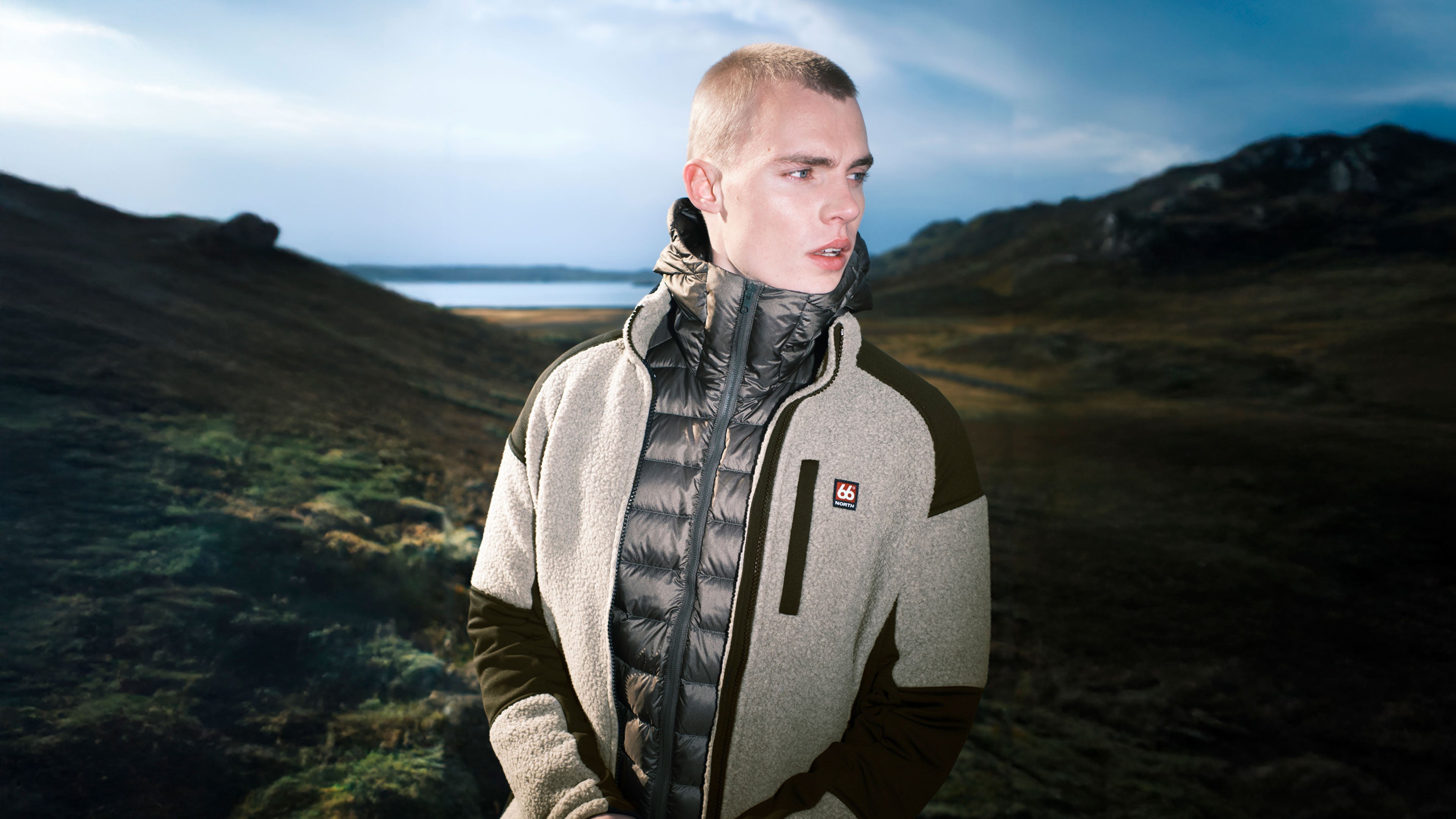Wind resistance
Wind resistance describes how well a garment blocks wind from flowing through it. Every garment made of solid material stops some amount of breeze. Considering Iceland is the second windiest country on Earth, the garments we make must do a bit more.


What we mean when talk about wind resistance
66°North organizes the wind-resistant clothing we make into four categories; wind-resistance, windproof, weatherproof, and weather-resistant.
Finding the right level of wind resistance for your needs
In inclement weather, the best gear is the gear at hand. Proper planning ensures that gear is the right fit for your needs.
For the runners and hikers

For those tired of gusts on their runs and hikes, consider wind-resistant garments like Kársnes vest. These lightweight, packable garments provide specialized protection built for use during activites. If your bike commute includes too much ocean breeze, give these a try.
For the everyday

For those looking to stay warm on blustery days, windproof or weather-resistant garments like Skaldi will be of interest. These garments provide suitable protection from wind and rain while prioritizing comfort. Clothing in this category fits many styles, from technical performance to more heritage shapes. If the fall leaves are swirling with no storms due, throw on one of these.
For versatility

Finally, for those seeking capable all-weather protection, a weatherproof garment like Snæfell is best. These garments use a breathable waterpoof membrane to keep out rain and snow. They layered laminate construction also effectively blocks the wind. While this weather buffer comes at the cost of some breathability, many Icelanders find the additional utility to be worth it. If you think bad weather makes for better stores, dress accordingly.

How to evaluate wind resistance
The construction of a garment determines its wind resistance.
Two garments made from the same material - cotton, for example - can end have vastly different wind resistances depending on the textile used and the garment’s features. A jacket made from a densely-constructed fabric like cotton canvas that has adjustable fasteners like cuffs and drawstrings will be much more wind resistant than one made of a porous fabric like cotton jersey that does not have features which seal out air.
In general: the more breathable a garment is, the less wind-resistant it is in turn.
This does not mean that every garment referred to as “breathable” will do a poor job cutting down gusts. Waterproof breathable laminates like GORE-TEX and Polartec NeoShell provide very high wind resistance by nature of their multi-layered, microporous design.
What it does mean is that garments bought specifically for their wind resistance should be evaluated based on this quality first. A wind-resistant garment can always be ventilated by unzipping a zipper. No amount of zips will make a porous garment resistant to the wind.
A garment’s wind resistance is measured by testing the volume of air that can flow through it within a given time. Typically, this testing is done using samples of the materials used on the garments themselves, and is measured with the unit “CFM” (an American unit meaning “cubic feet per minute.”) Traditional fleece is rated around 200 CFM. Polartec’s Wind Pro fleece is rated at 60 CFM. Polartec Neoshell is rated around 0.5 CFM. GORE-TEX Pro is rated under 0.5 CFM.
While CFM ratings may be a helpful resource to some, we believe consistent, qualitative, experience-driven ratings help people find the products that best suit their needs


